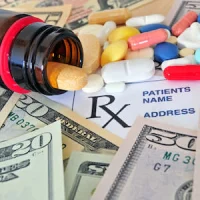You might also like: Three Ways to Contain Medicine Costs and Shortages
Since brand-name medications are usually more expensive than equivalent
generics, consumers often turn to and insurers demand exhaustive use of the
latter. As a result, brand discount cards have become a popular marketing mean
for many manufacturers. These cards are essentially coupons with which drug
manufacturers motivate patients to give preference to brand-name drugs instead
of generics, even if the latter are available at a much lower price. It is
estimated that in the US commercial insurance plans cards are used for 20% of
brand prescriptions. In Canada over 1.5 million individuals have signed up for such
cards, and during the period of the study (between September 2014 and September
2017) the use of drug discount cards has increased by 67%.
The study sampled Canadian claims-level pharmacy data of 2.82 million
prescriptions for 89 different medications where brand-name drug discount cards
were used, and compared the costs of these prescriptions to matched generic
equivalents. Three groups of prescriptions were in the focus: paid through
private insurance, public insurance and out of pocket.
The researchers found that when compared with generics, the use of such discount cards increased costs for both private and public insurers. In spite of the fact that with co-pay cards some patients were able to decrease their average out-of-pocket costs, for many the result was increased expenses.
Private Insurance
Within the studied period, third-party
insurers paid $69.4 million for branded prescriptions which is $21.7 million,
or 46% more than an estimated $47.7 million for equivalent generic
prescriptions. In contrast, the difference was almost nil for the out-of-pocket
component for these prescriptions: $7.1 million paid for branded prescriptions compared
to $7.2 million estimate for generics. The gap ($108 000) represents a 2% ($0.12)
saving per prescription for patients.
Public Insurance
Government plans expenses on branded prescriptions with discounted cards amounted to $26.0 million. If generics were used, the sum would be $25.7 million. The difference of $334 000 represents an increase of 1.3% ($0.37) per prescription. For patients this gap was much wider, $4.1 million spent vs. $2.4 million estimated. Thus, out-of-pocket payments were $1.7 million bigger (+$1.86 per prescription).
Cash Payments
This group benefitted the most from the
use of brand discount cards. While the branded prescriptions with a discount
card cost patients $17.3 million, the equivalent generics mix would cost them
$18.7 million, ie $1.3 million, or 7% more (+$3.49 per prescription).
Conclusion
The researchers concluded that for private insurers, the use of brand
discount cards increased the expenses; for public insurers, the difference was
insignificant; and for patients the impacts were mixed and differed according
to both insurance status and the specific drug in question. As the study
suggested, these discrepancies were caused by the difference in how brand drug
prices were reimbursed, with private insurers covering the cost of brand
prescriptions and public plans paying only the available generic price (even
when a brand version was dispensed).
According to the authors, patients, their clinicians and employers should be
aware of the impacts on the health care system described in the study. They
pointed out that, for example, private insurers would most likely pass the
increased cost on to consumers and their employers in the form of increased
insurance premiums. Furthermore, patients should recognize that discount cards
have mixed impacts on their out-of-pocket costs and compare the discounted price
of brand-name drugs with the equivalent generic at their pharmacy.
References
Law M, Chan FKI, Harrison M et al. (2019) Impact of brand drug discount
cards on private insurer, government and patient expenditures. Canadian Medical
Association Journal, 191(45): E1237-E1241. Available from https://www.cmaj.ca/content/191/45/E1237
Image credit: iStock







